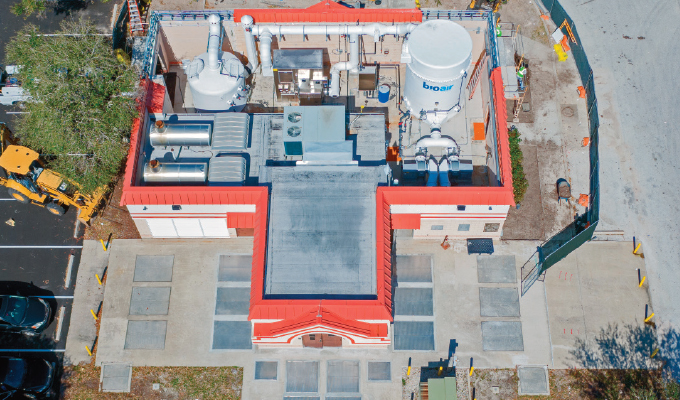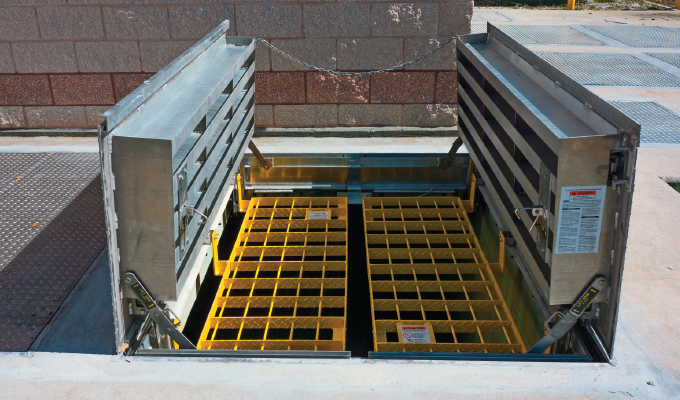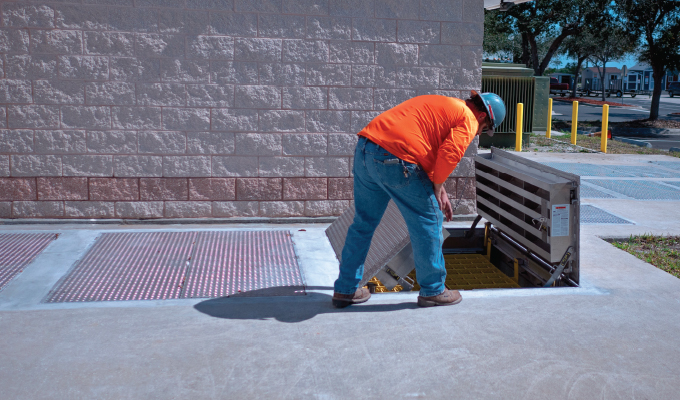By Thomas Renner, Photos by Talmage Brown-Ward
Nothing lasts forever, but especially so in highly-corrosive wastewater treatment plants. Pinellas County in Florida learned that unpleasant and odoriferous lesson when one of its major pump systems needed a major overhaul.
Earlier this year, the county completed a thirteen-month, $2 million dollar project in which it completely redesigned the wastewater treatment station in the town of Seminole. The county devised a three-part system that works in tandem, including an ozone polishing unit, biological trickling filter, and carbon activation that significantly reduces odor coming from the plant. Heaven knows it was needed.
“It’s vile. It’s absolutely disgusting,” said Brad Fayette, who worked at a nearby car wash, in an interview with a local television station in 2017. “It’s like rotten eggs, really bad rotten eggs,” Kris Van Kirk told the television reporter. “It’s a stench so bad it will make your stomach turn.”
“Everyone in the community got to experience the odors that were coming out of that system,” says Tom Menke, Pinellas County Utilities engineering section manager. “We have a good system working now.”
The prior system had been installed in the late 1980s. But over time, the corrosive nature of wastewater treatment took its toll on the facility. Moisture and contaminants create highly corrosive conditions that attack metal and concrete structures, causing deterioration. Conditions are worse when the treatment plant is located in a humid, coastal environment, which accurately describes the situation in Seminole. The system needed to be fixed.

POLISHING THE OZONE LAYER
Before investing in a new wastewater system, Menke says the county took extensive sampling to determine the precise chemical nature of the odor that was penetrating into the community.
“One of the most well-known odors that everyone is aware of is hydrogen sulfide, which is the smell that people associate with rotten eggs,” Menke says. “But once you treat that, there may be some odors underneath that may come to the top.”
The underlying odors, called mercaptans, are a harmless but pungent-smelling gas made of carbon, hydrogen and sulfur. The pumping station in Seminole includes a unit that “polishes” the ozone layer, helping to reduce odors that might escape from the wastewater treatment plant, especially mercaptans. Treatment of the ozone has been used in the treatment of drinking water, but has only started to become more prevalent in the wastewater industry.
In the process, ozone disperses into the air, flows over surfaces, and travels into fabrics, crevices, and surfaces. It seeks out and eradicates the organic molecules that form many indoor pollutants. Ozone rapidly oxidizes them by reverting to oxygen and depositing the third oxygen atom into the pollution.
“This very effective process deodorizes, disinfects, and destroys many of the pathogens and fumes that negatively impact air and water sources in a natural way,” A2Z reported in an article on its website.
The system has several advantages to other systems. It is more effective than chlorine, and no chemical residues are left behind. Ozonation also prevents the regrowth of microorganisms, and ozone is created onsite, which reduces safety concerns and shipping costs. It also provides additional oxygen to water.
Menke says the ozone treatment system in Seminole is rare for Florida, but the county knew that it needed to upgrade its system. It replaced a chemical scrubber unit that had lost its effectiveness. “Chemical scrubber systems work well to a point, but we thought it was in our best interests to replace it,” Menke adds. Plus, the new system is also environmentally friendly. “It’s biological, not chemical, so it should be better for the environment,” Menke says.

OTHER SYSTEM COMPONENTS
The other parts of the wastewater treatment process include the use of activated carbon to bind different chemicals through adsorption, which is the adhesion of a thin layer of molecules to the surfaces of liquids with which they come in contact. The carbon removes organic and some inorganic substances.
Seminole’s system also includes trickling filters to remove organic matter from wastewater. The filter is an aerobic treatment system that utilizes microorganisms attached to a medium to remove organic matter from wastewater. As the wastewater flows over the medium, microorganisms already in the water gradually attach themselves to the rock, slag, or plastic surface and form a film. The organic material is then degraded by the aerobic microorganisms in the outer part of the slime layer.
SORELY NEEDED
Besides the odor, there were other indicators that the existing station needed an overhaul. One glaring red flag was the corrosion evident on the existing floor doors that allow access to valves and pumps. The doors were replaced with sixteen floor doors manufactured by The BILCO Company.
“The existing doors did not close well,” says Jake Warren of TLC Diversified, whose company completed the system overhaul. “I was scared to walk on some of them because they were so corroded. When you put something in that environment, it will corrode, especially over a long period of time.”
The aluminum doors allow access to wells, pumps and valves. Some of the doors were BILCO’s JD-AL H20 Doors, which are reinforced for AASHTO H20 wheel loading. That feature allows heavy trucks and other industrial equipment to park on the door. Jeff Smith of Building Specialties in Bradenton worked on procuring the doors for TLC Diversified.
The new doors carry a twenty-five-year warranty and are equipped with type 316 stainless steel hardware for superior corrosion resistance and BILCO’s patented lift assistance for easy, one-hand operation.
“There was a lot of flow coming in,” Warren says. “That created a lot of gases, and the doors just became compromised over time.”
FINALLY, RELIEF
Pump Station 16, where the work occurred, collects wastewater from four different collection basins throughout the area. The station then pumps the wastewater to the South Cross Bayou Plant. It is located on a commercial strip that includes a Home Depot, the car wash, restaurants, and retail stores.
After complaints about the odors emanating from the wastewater facility, the county started to investigate the process of overhauling the plant in 2017. Construction started in January of 2019. Approximately thirteen months later, the beleaguered businesses and residents that caught a whiff of the foul water treatment odors finally found relief.
“We were sympathetic to their complaints,” Menke says. “We tried to do the best we can. I think this is a good solution, and I think it’s going to serve us well for the long haul.”
FOR MORE INFORMATION
Thomas Renner writes about construction, building, and other trade industry topics. The BILCO Company has served the building industry since 1926. During these years it has built a reputation among architects, engineers, specifiers, and the construction trades for dependability and for products that are unequaled in design and workmanship. For more information, visit www.bilco.com.
MODERN PUMPING TODAY, April 2020
Did you enjoy this article?
Subscribe to the FREE Digital Edition of Modern Pumping Today Magazine!



